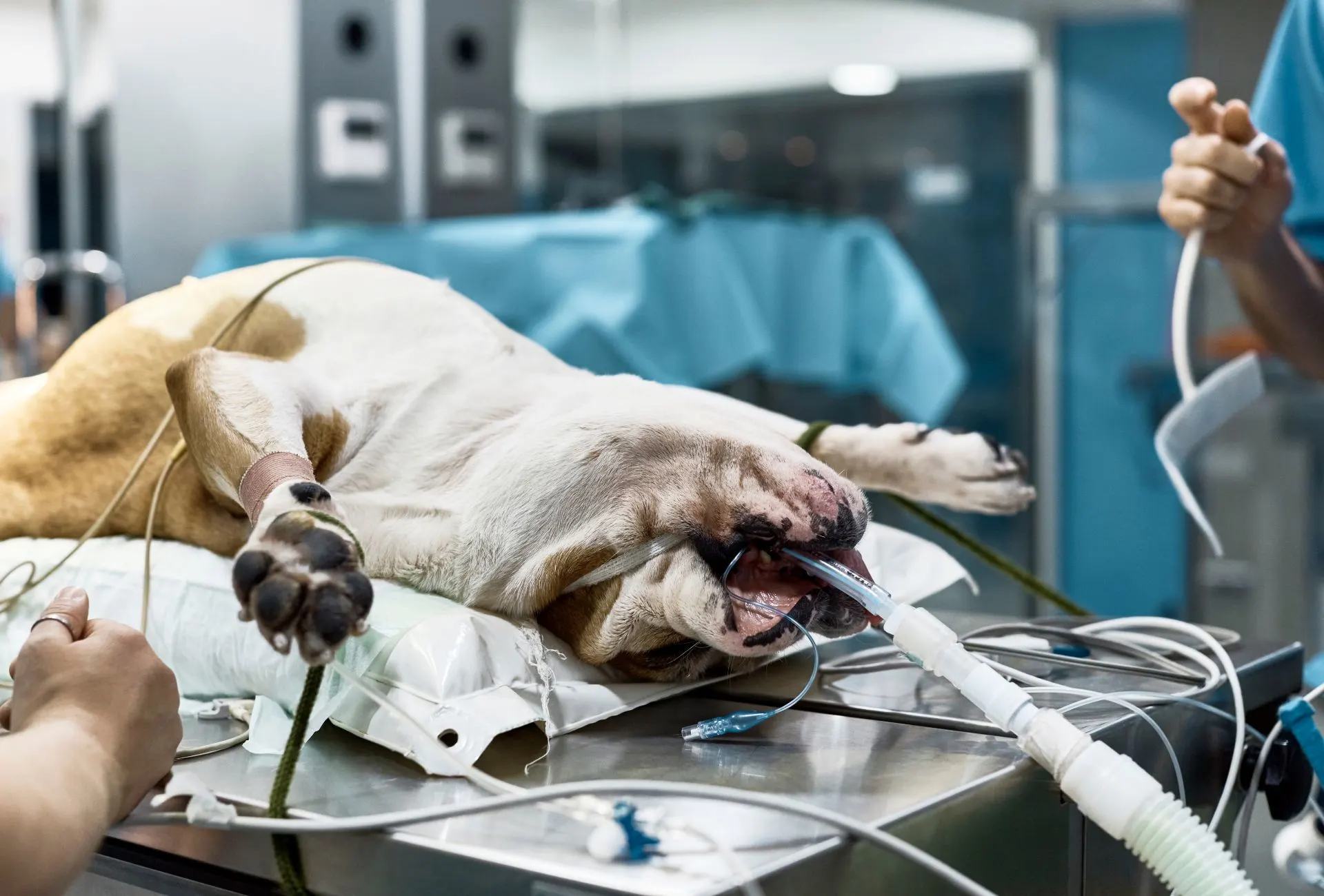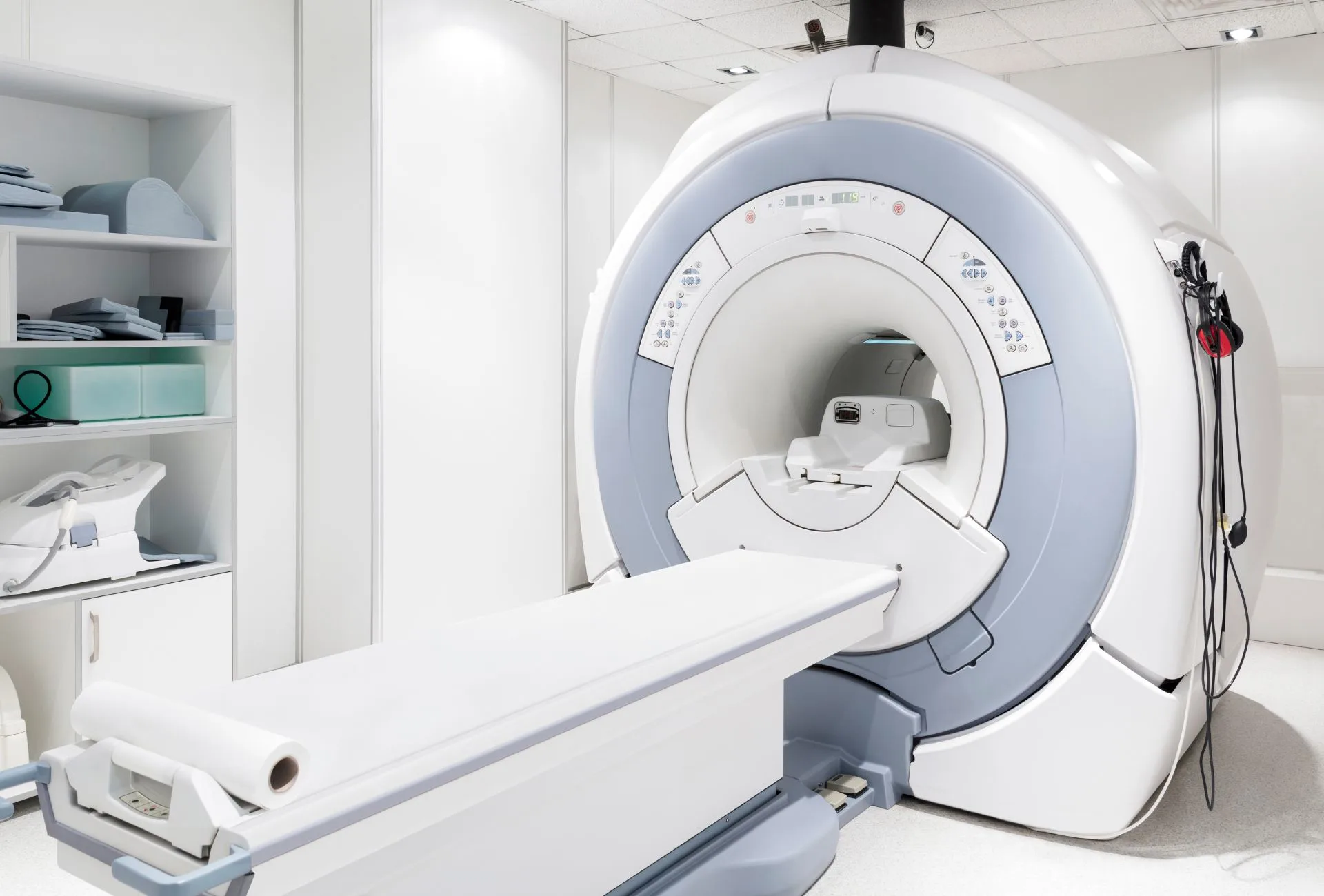MRIs are an incredible diagnostic tool and a relatively recent addition to the veterinary toolbox.
Contrary to other imaging options such as X-rays, CTs, or ultrasounds, a non-invasive MRI uses magnetic fields and radio waves to shed light on cases where other diagnostics can’t provide a clear picture.
MRIs are rarely the first option and for dogs, there are still anesthesia-related risks which are worrying a lot of dog owners.
The anesthesia risk is estimated at around 0.17% (drops to 0.05% for healthy dogs), according to a relevant large-scall 2008 study.
These are some of the conditions where MRIs can be used in dogs:
- Brain issues (for example balance problems, extreme behavior change, tumor, encephalitis)
- Spinal cord pain
- Knee issues
- Nerve damage
- Ear diseases (rarely the first option, but more reliable than CT scan)
- Seizures (elimination of other causes increases confidence in potential diagnosis)
As you can see, an MRI can be potentially handy for a variety of health issues and can sometimes be the last resort.
But what about the cost?
You might’ve heard that MRIs for dogs are incredibly expensive and many dog owners are terrified upon hearing about the cost for the first time.
How Much Does an MRI Cost For Dogs?
A dog MRI usually costs $2,500-$5,000 in the US. All-in estimates should include consultation, blood tests, anesthesia, etc. Costs depend heavily on the location and quality of anesthesia as well as monitoring.
Pricing data is not publicly available but we have loads of dog owner experiences, surveys, and expert quotes.
- Philip Cohen, a veterinary neurologist, mentioned “$2,000 to upwards of $3,500” via PetMD
- A neurology specialist hospital quotes up to $5,000 (echoed by MetLife Insurance)
- Fetch, a pet insurance, quotes upwards of $2,000
- Lemonade’s pet insurance writer estimates $2,500-$6,000
Why Are MRIs for Dogs so Expensive?
MRIs for dogs are expensive due to the high acquisition and upkeep costs including staff of a specialized hospital and anesthesia-related costs.

Blood tests and X-rays are pretty common in dogs, but MRIs are not as commonly used.
And when these machines are used, they are associated with huge costs.
Veterinary neurologist consultation and examination, extensive blood work and imaging to ensure safety, anesthesia plus monitoring and care after.
Anesthesia is a huge differentiating cost factor as pricing varies depending on the anesthetic and quality of monitoring.
Furthermore, my personal speculation on why access to MRI machines may be restricted:
- Cost is prohibitively expensive for dog owners (perceived lack of necessity)
- Many pet insurances won’t cover MRIs
- Lack of access in rural areas
- Vets are not taught how to convey the importance to dog owners
I go into more detail regarding pet insurance below.
If you don’t have insurance, ask your vet about other options and don’t be afraid to shop around.
According to a 2023 report, the pet MRI market is expected to grow from $218m in 2023 to $360m in 2030.
The report cites “increasing pet humanization, technological advancements, initiatives by key companies, and the adoption of pet insurance.” as the key reasons for this growth.
Keep in mind that some areas are simply more expensive and that hospitals specializing in MRIs might have higher-end machines and monitoring equipment.
Dog MRI Pricing in Germany & UK
Contrary to the USA, the fees are regulated and can be looked up by everybody. Fees are set but range from 1-3x depending on several factors.
A dog MRI in Germany costs 700€-2100€ after a price increase in November 2022.
If you add in the fees for examination, blood tests, as well as anesthesia with monitoring, an MRI in Germany will cost you around 1000€ on the lower end and 2600€ on the higher end.
Multiple consults, prolonged anesthesia, extensive imaging beforehand, or other complexities will increase the cost.
Previously, you had to pay 300€-350€ for the MRI which goes up to nearly 550€ if you wanted the results in written form, online MRI pictures, plus everything on a USB stick.
This means a doubling of the base cost for the MRI itself which is pretty substantial.

According to this unofficial report, pet MRI pricing in the UK ranged from £1,500-£3,500, up 31% from 2018.
In this ongoing survey among 5,000 respondents, over half of them believed the MRI costs to be lower than the lowest end.
40% thought it would be under £999 – wishful thinking.
Is MRI Worth it for My Dog?
If your vet recommends the MRI for your dog, it’s definitely worth it, the only reason not to do it is financial.
The reason why an MRI might be worth it for your dog is that soft tissue structures are much more detailed and superior to diagnostics such as X-rays or CT scans.
If you’re unsure, feel free to consult a second vet and check your insurance’s diagnostic policy.
Your insurance covers MRIs? Then there’s no reason not to do it, except that the premiums might be higher and you probably have a deductible.
But what should you do if your insurance doesn’t cover MRIs for dogs?
If a second specialized vet strongly disagrees that an MRI is necessary, you should ask your vet who initially ordered it to be done why exactly it is beneficial.
Of course, you can always go ahead with the procedure regardless.
In case the second opinion agrees that it’s worth it and your insurance doesn’t cover it, you might be able to discuss payment plans with your vet.
An MRI can be invaluable in diagnosing some conditions and shelling out the money is definitely worth it if there’s even a slight chance of finding the cause and curing it.
However, keep in mind that the MRI is just the first step.
Whatever will be uncovered will probably require more consultations, anesthesia, and surgical intervention.
Does Pet Insurance Cover MRI Scans?
Yes, if a vet recommends the procedure, pet insurance will usually cover diagnostics like MRI scans, but not all insurance plans cover MRI scans.
Some insurances may explicitly exclude MRI scans while others only include them under certain circumstances.
These limitations include:
- Exclusion of pre-existing conditions
- Coverage for emergencies or accidents only
- Pre-approval required, otherwise no reimbursement
- Fixed limit for diagnostics
Read your dog’s insurance policy upfront and only get a policy where diagnostics are included.
A quick tip whether you have a policy or are about to get one: Just use the search & find function and type in “diagnostic”, “MRI”, and the like and you’ll quickly find it.
An insurance agent should also be able to help you, but make sure you read it yourselves before signing.
The premiums are comparable and a more prevalent problem is the fact that many cheaper policies exclude breed-related conditions and the like.
Whatever you do, it’s best to discuss the possibility of an MRI for your dog and how much you can expect to spend.
Insurance can reduce the cost but not every insurance covers every diagnostic so compare them and make sure you get the right policy for you, if you choose to get one.
If all else fails, it’s always possible to discuss payment plans with your vet or turn to other sources to receive funding.
Disclaimer: This blog post does not substitute veterinary attention and does not intend to do so. I am not a veterinarian or pet nutritionist. If your dog shows any sign of illness, call your vet.